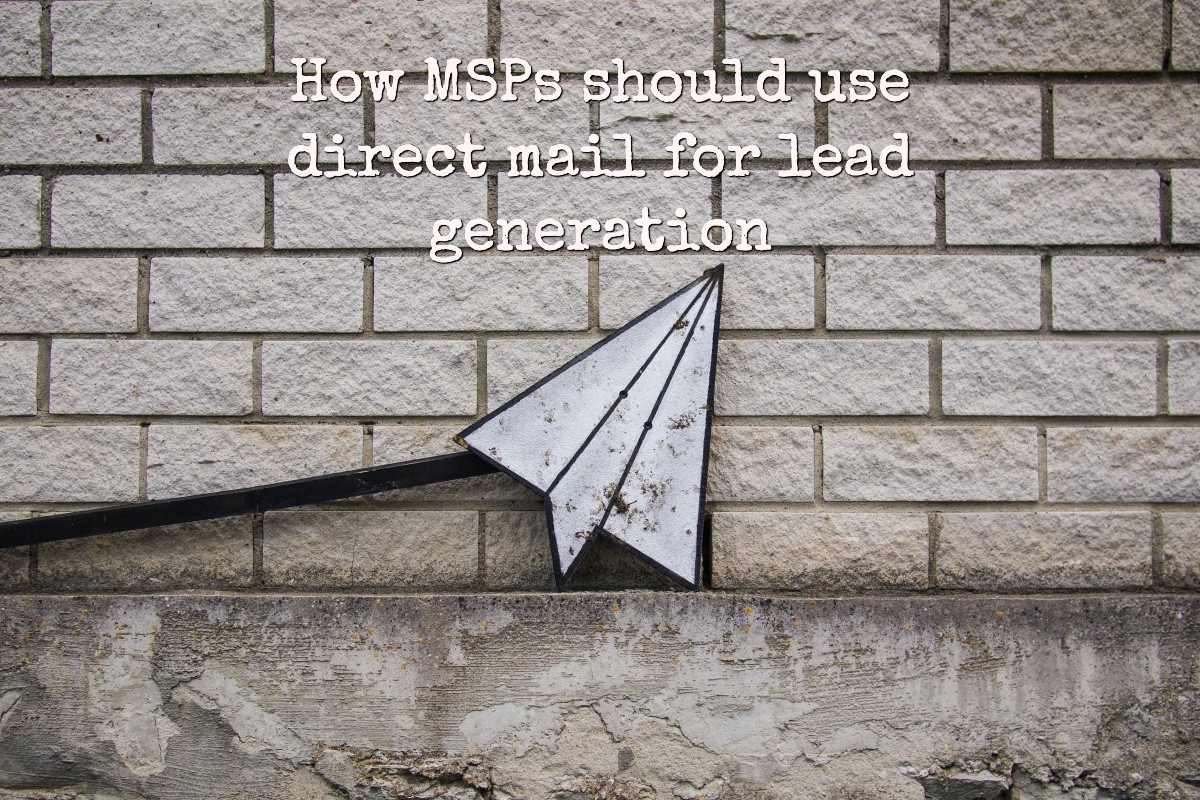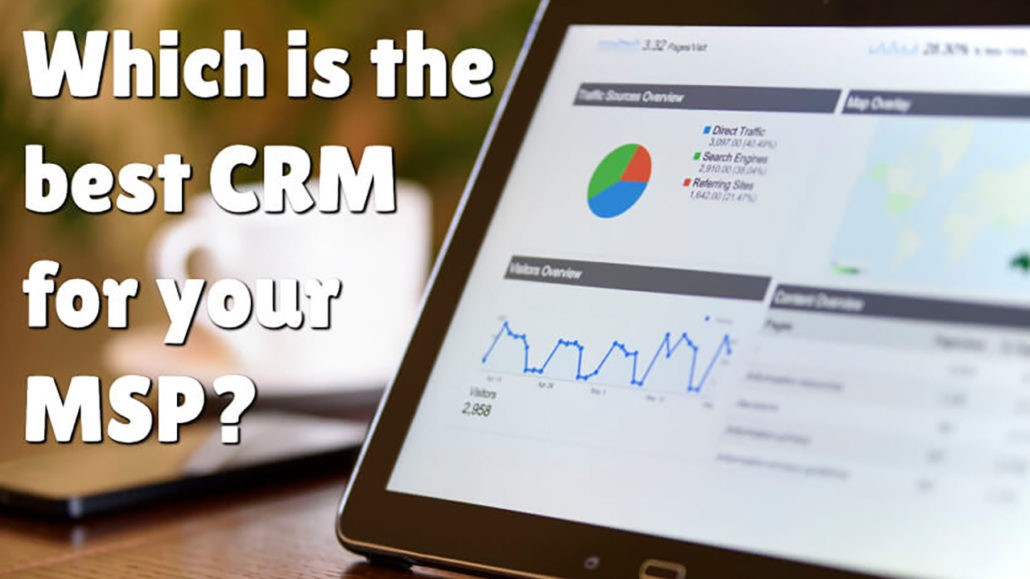In this ultimate guide, you’ll learn what direct mail is and why it can be your secret weapon to successful lead generation.
Jump to
Part one: What is direct mail?
Part two: Direct mail in action
Part three: Making it easier: Your contacts
Part four: Making it easier: Your message
Part five: Making it easier: Automation
What is direct mail?
How many emails have you received so far today?
Probably quite a few, right?
And how many of those did you delete without even opening?
Also quite a few?
We’re so used to being bombarded with email marketing these days, that it takes something really special to stand out. Even then it’s hit and miss as to whether you’ll see it and take notice or give it your full time and attention.
Now think about the post you received today.
Not a lot there? Definitely not a lot when you compare it to the volume you received say, 10 years ago.
It’s fair to say that emails and social media have taken over when it comes to interruption marketing. That’s the advertising, promotional, and sales messages that brands all over the world use to capture someone’s attention when they’re not expecting it. Think magazine adverts, billboards, the post.
And while that may mean your business needs to adapt and learn the ways you can better engage your audience online, it also presents you with a very big opportunity. Direct mail.
Because most of your competitors are also going down the route of advertising by email and social media. They want to do what everyone else is doing. To keep up. But imagine how well your own marketing message would stand out arriving through their letterbox instead of in their inbox. A physical letter - or a postcard - that the intended recipient could hold in their hands. Place on their desk. They would have little choice but to pay attention to that, and may even come back to it again later because it’s right there in front of them.
Direct mail in action
Recently, I sent out a test letter to promote my MSP Marketing Edge.
I sent 25 mini marketing packs in the post to MSPs around the UK. From those 25 packs, I got two sales. That’s an 8% response rate, which is excellent.
My immediate ROI (return on investment) was 692%!
It cost me around £1 per pack and generated an immediate revenue of £198. And because the MSP Marketing Edge is a monthly service, the chances of that ROI increasing are very high.
Of course, now I’m very motivated to send those packs out to every MSP across the globe!
So ask yourself, if the ROI has the potential to be so high, why aren’t more businesses using direct mail for lead generation or even to gain new business?
The simple answer is that most business owners see direct mail as difficult. They think it’s old fashioned. And they perceive it to be expensive. Truth be told, it can be all of those things, but that’s exactly why you should do it!
Making it easier
Your contacts
If you’re going to embark on a direct mail campaign, there are a few things you’ll need to consider.
Firstly, who will you be sending your direct mail to? You’ll need physical addresses, so it’s not simply a case of finding email addresses for your leads.
There are two ways you can get name and address details quickly for your business. You can either buy them, or you can data scrape them. And there are pros and cons to each method.
Buying data tends to be an efficient method. Companies like Selectabase offer segmented mailing lists, and they’re compliant with GDPR legislation. The lists are highly accurate and it’s the fastest way of getting a mailing list together, with low effort.
The downside to this is that the data will expire after a set term, which is usually a year. After this you won’t be able to use it, so if you want to carry out more direct mail campaigns you’ll need to buy another list.
Data scraping is where you hit Google and search for the names and addresses of your target businesses. You compile your own list in a spreadsheet and make sure you find all of the data that you’ll need for the most successful campaign. This method should also be relatively accurate, although there will be some out of date business information on Google from time to time.
However, this method is very time-consuming and laborious. An option here is to outsource the data scraping. There are usually willing freelancers on websites like Fiverr who will collect the data you need on your behalf. The upside to this method is that you can keep any data you collect indefinitely.
Your message
Typically people will send either a letter or a postcard as their preferred form of direct mail message, but there are loads of options available to you…
Letter
The most basic choice, but still one of the most effective means of direct mail. A short letter that gives you the space to grab attention, but also to include enough detail to make your proposal really enticing.
Postcard
Postcards are clear, concise and simple. They convey your basic message and provide a call for action while being eye-catching and attention grabbing. You can use a postcard to promote a particular offer, or simply to point out the benefits of working with you.
Flyer
A flyer is a paper advertisement, often printed in bulk for distribution on a large scale in public places, through the post or handed out directly, like at a trade show. With a bold, eye-catching design and concise, attention-grabbing message at the top, a flyer can be an effective and relatively economical form of marketing, in the right situations.
Newsletters
A well-designed, printed newsletter filled with useful information along with a call to action can be extraordinarily effective in engaging new clients. This style of direct mail offers the depth to show readers just how good your business is. It will be kept and read by potential clients for its looks and its substance.
Lumpy mail
Lumpy mail is an envelope with an object inside that obviously isn’t paper. People will almost always open it just to see what it is, and there’s a high probability they will read the message as well. It’s important to make sure that the gift is perceptible as a lump in the envelope, so a book wouldn’t work, but a keyring would.
Self-mailers
Self-mailers are designed to be sent without an envelope. Think of a pamphlet printed on good-quality card, folded, and with an address printed directly to it (or stuck on with a label). These can provide a lot of information, whilst still being eye-catching and relatively low cost.
Of course, it’s not just about the form your message arrives in, but also the content of the mail, too.
You should use attention-grabbing, benefit-driven headlines, and make sure the body of the text is to the point and gets your message across effectively. Remember the AIDA formula when creating the content:
Attention - grab the attention of the reader with a clear, concise headline
Interest - generate interest using the benefits of your product or service
Desire - build an emotional connection to encourage your reader to want to buy
Action - include a strong call to action to tell them what to do next
Automation
Of course, one of the biggest perceived headaches is getting your direct mail designed, printed and posted. That’s a lot of additional work, especially in a small business.
But, just like so many of the other tedious and repetitive jobs in your business, you have the option of automating it all.
Yes. I can almost hear your cries of joy.
There are a few services around which will take all of this pain away from you. And the best bit? It’s really cheap to do it, too. I’m going to let you in on a secret now. There’s a SaaS called Docmail and it’s worth its weight in gold.
It’s kind of like a mail merge, but it’s all done in the cloud. You upload a document and a CSV file of your contacts and it does the mail merge for you AND posts the letters. And what’s more, you can do this for as little as 59p per letter, which is 7p cheaper than a second class stamp.
Accounts are free to set up, you just pay for what you send. It really is that simple.
But there are lots of features within Docmail that allow you to personalise what you’re sending more than you would have the time to do if one of your team was to print and send out the direct mail. Little touches like adding a design or message to the envelope can really help your mail to stand out.
My pro-tip if you want to give Docmail a go is to load credit to your account rather than paying as you go. It works out cheaper in the long-run and it does make the process simpler too - especially if you plan on tasking one of your team to do it.
Multi-touchpoint campaign
What is it?
Of course, it would be wonderful if we could send out some mail and just sit back and watch the new leads come flooding in.
On occasion, it works like that, but realistically that isn’t going to happen often. You need to follow up on your direct mail, making it what we call a multi-touchpoint campaign.
Simply put, once you’ve sent your direct mail out, you need to follow up with a call or a series of emails - or both!
Think of it as another opportunity to get in front of your prospective customer. And because you’ve already sent them some mail, it should make it slightly easier for you to get to speak to the decision-maker.
The important thing to remember is to keep your message the same across all communications. So if your initial letter or postcard offers a free trial, for example, you must offer the same thing in your emails or telephone calls. Consistency is key. The more your prospect hears about the same offer across differing mediums, the more likely they are to take you up on it.
What your multi-touchpoint campaign looks like really all depends on the people you’re targeting. It’s a good idea to sit down and have a think about the methods of communication that might work best for them.
For example, you might decide a postcard followed by a telephone call, followed by a series of emails would work best if you were targeting a call centre manager. But if you were targeting a hair salon manager, you might want to send a letter, followed by emails, and perhaps a text message, using a call as a last resort (because it’s likely that taking a phone call in the middle of a working day isn’t always easy for a hairdresser, but they can read emails, texts etc in their own time).
Why?
For most of the people you target, a phone call is a really important step in your multi-touchpoint campaign. Why? Because that’s how you truly start to build a relationship with your prospective customer.
And for that reason, it’s vital that you have the right person making the calls.
A mistake that a lot of businesses make is putting a sales person on the phone. This won’t work. You can spot a sales person a mile off and your prospects will too. These are not sales calls, they’re follow-up calls, so a friendly, casual chat is better than a hard sell.
Ideally, you’d have someone making the calls that doesn’t get involved in the sales aspect. In fact, this could be the perfect role for a mum who’s getting back into work, for example. They need to be helpful and hold a conversation, but not pushy. This is the first ‘face-to-face’ contact your prospect is likely to have with your company, so you want it to be positive and informative.
Get this part of your campaign right and it has the potential to get really good results out of your direct mail offering. Remember, the key is not to apply pressure, and to keep in mind that people only buy when they are ready to buy. However, the more you can get in front of your prospects, the more likely it is that you’ll speak to them at the exact time they’re looking for a solution like yours!




